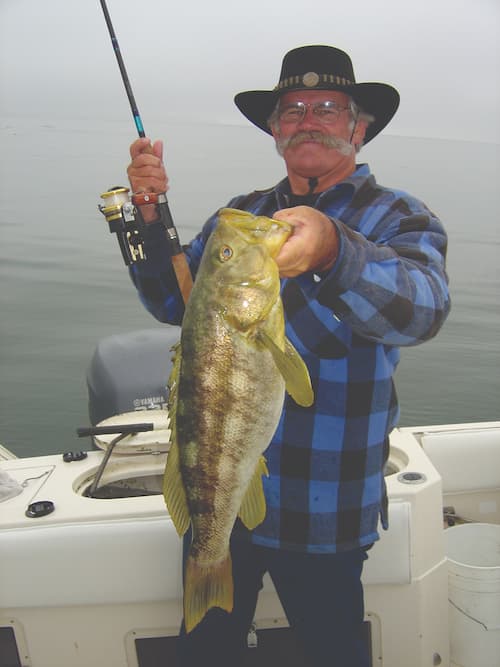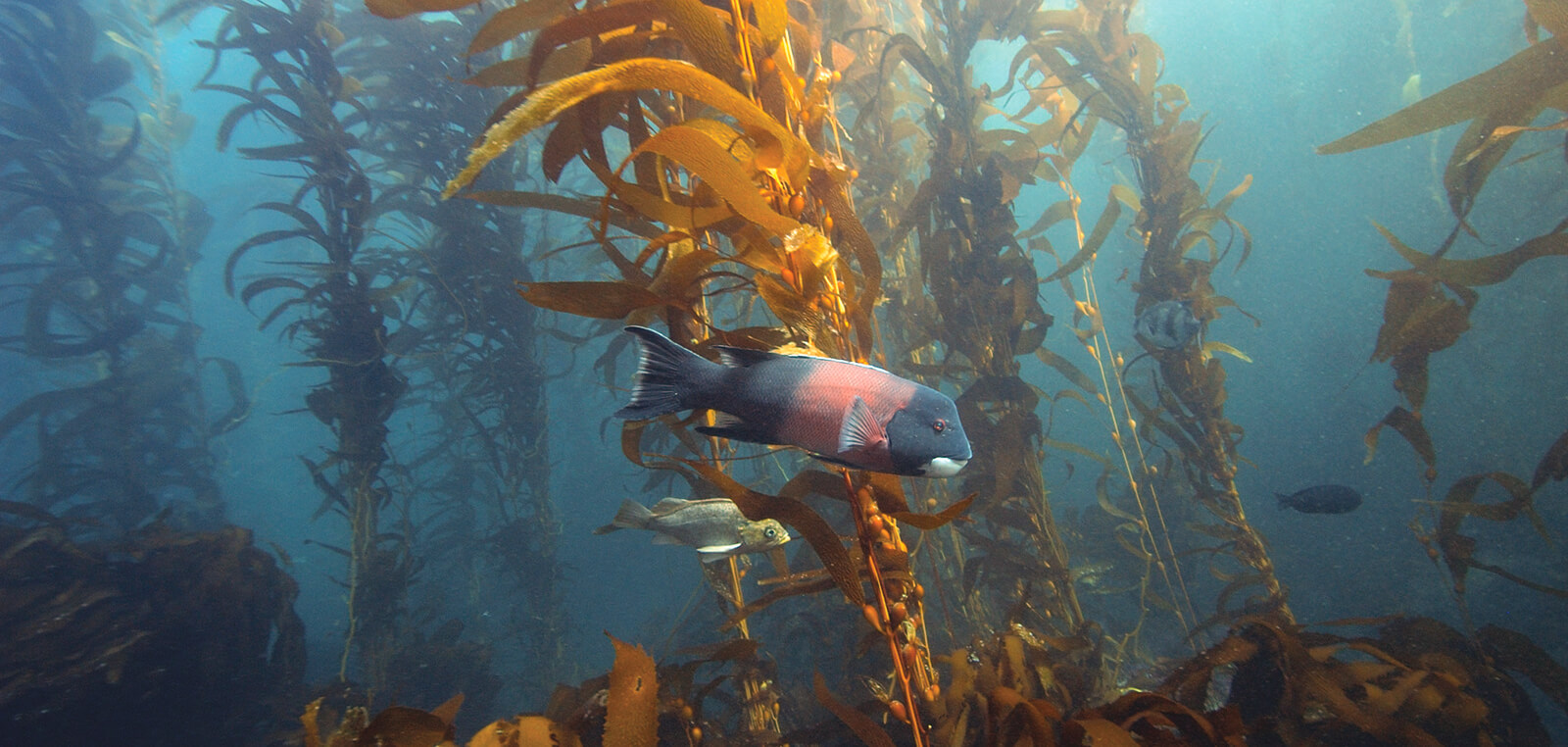Fishing for the Future
Stories from the Blue: Captain David Bacon

Captain David Bacon is the owner and operator of WaveWalker Charters and his family owns Hook Line and Sinker fishing tackle store. While working in the high tech industry, he came to Santa Barbara, California one day on a fishing trip, and decided to stay. He became a captain and has spent decades running a fishing charter boat in the Santa Barbara Channel and around the Channel Islands. “I was born and bred for fishing – been doing it all my life – fishing and hunting.” This is his Story from the Blue.
What makes Channel Islands National Marine Sanctuary truly unique for fishing is that we are positioned where the cold California Current comes down the coast from the Gulf of Alaska, and the warm Southern California Countercurrent comes up the coast. The western section of the Santa Barbara Channel, near the Channel Islands, is where it all mixes together. I’ve seen a lot of changes happen in these waters over the years. Giant sea bass were fairly abundant when I was a kid, and then one day they weren’t—they were overfished. Now they are protected and are becoming more and more abundant. An entire generation of fishers had to give up fishing for them in order to make that happen and to do what it takes to help those stocks recover.
My role on the Channel Islands National Marine Sanctuary Advisory Council is to represent recreational anglers. We get the entire spectrum of anglers into our tackle store, which allows me to hear a range of perspectives. My position on the advisory council allows me to inform sanctuary staff about those perspectives. My job is to be a bridge between the sanctuary and the anglers, and much of that requires education both ways. A common misconception anglers have is that you can’t go fishing in the sanctuary, but that couldn’t be farther from the truth! I let people know that you can absolutely fish within the sanctuary, but you need to avoid fishing within the 11 marine reserves inside of the sanctuary which are marked on sanctuary maps. I also communicate these misconceptions to sanctuary managers so they can do a better job of informing anglers about where they can and cannot fish.
My greatest hope for Channel Islands National Marine Sanctuary is to use my role to strengthen the relationship between the sanctuary and anglers."
There are so many diverse perspectives around that table—government agencies and local people sitting down to talk and work towards common goals. The anglers want to help the sanctuary achieve its angler-friendly goals because they care about having access to healthy fisheries, and the sanctuary wants the advice of the anglers because they are the ones out there on the water every day.
My hope for the ocean is that we can make it healthier. The ocean is undergoing so many changes, and we need to consider how they might be affecting the fish populations, because ultimately I want healthy fisheries. My greatest hope for Channel Islands National Marine Sanctuary is to use my role to strengthen the relationship between the sanctuary and anglers, because I believe the more we work together, the more we can accomplish.


